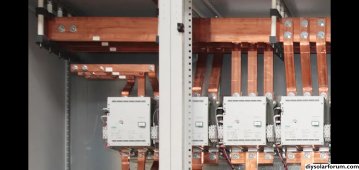Just ordered a 1" by 1/4" copper bar. I am going to build a cradle for the main shut off that stradles one of my battries
Buss bar to battery terminal, 4/0 to distribution.
Going to wrap the buss bar in heavy duty electrical tape.
Now I just need to find longer battery bolts.
Thanks
ANdy
Buss bar to battery terminal, 4/0 to distribution.
Going to wrap the buss bar in heavy duty electrical tape.
Now I just need to find longer battery bolts.
Thanks
ANdy



